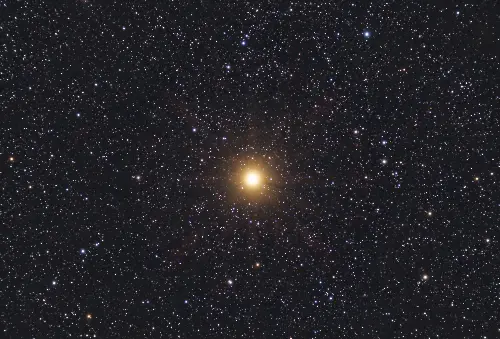
Two of Earth's largest mass extinction events were likely triggered by the fallout from two supernovae in nearby space.
This is the conclusion of a team of researchers from Keele University, England, who calculated the rate of supernova explosions in the vicinity of our solar system.
Supernovae occur when sufficiently large stars run out of fuel and collapse under their own weight, expelling material in the form of an expanding shock wave.
"Supernova explosions are some of the most energetic explosions in the universe," paper author and astrophysicist Nick Wright said in a statement. "If a massive star were to explode as a supernova close to the Earth, the results would be devastating for life on Earth. This research suggests that this may have already happened."
An explosion near to Earth, the team explained, could have stripped protective ozone from the atmosphere, exposing life to harmful ultraviolet rays from the sun and sparking acid rain.
In their study, Wright and colleagues conducted a census of all the massive stars that lie within one kiloparsec—that is, 3,260 light-years—of the Sun.
Specifically, the team focused on a type known as OB stars, which are hot, bright and short-lived. The goal of their survey was to learn more about how star clusters and galaxies form by studying the rate of stellar formation in our region of the Milky Way.
But the analysis also allowed the researchers to calculate the rate at which supernovae occur both within our galaxy—but, more specifically, within 65 light-years of Earth.
They then compared this with the rate of those mass extinction events in the history of life on Earth that have previously been suggested may have been caused by a supernova explosion (and excluding those linked to triggers like asteroid impacts and ice ages).
"We calculated the supernova rate close to Earth and found it to be consistent with the rate of mass extinction events on our planet that have been linked to external forces such as supernovae," said Wright.
Specifically, the findings support the hypothesis that supernovae could have triggered two of the so-called "big five" mass extinctions: those at the end of the Ordovician Period, some 445 million years ago, and the end of the Devonian, about 372 million years ago.
The former saw 50 percent of all genera and 19 percent of all families become extinct, while the latter killed off some 60 percent of genera and nearly 85 percent of species in the world's oceans.
The causes of both events had been long debated, however one hypothesis has linked them to depletions in the Earth's protective ozone layer, such as might be caused by a supernova going off in local space.
According to the researchers, the findings are a "great" illustration of how massive stars have the capacity to both create and destroy life.
"Supernova explosions bring heavy chemical elements into the interstellar medium, which are then used to form new stars and planets," paper co-author and astrophysicist Alexis Quintana said in a statement. "But if a planet—including the Earth—is located too close to this kind of event, this can have devastating effects."
The team have estimated that 0.4–0.5 supernovae occur in galaxies like the Milky Way each century—a slightly lower figure than previous estimates of two or three every 100 years.
Luckily for us, however, the only nearby stars capable of going supernovae in the next million years—Antares and Betelgeuse—are far enough away that we would not feel any effects.
Do you have a tip on a science story that Newsweek should be covering? Do you have a question about supernovae? Let us know via [email protected].
Reference
Quintana, A. L., Wright, N. J., & García, J. M. (2025). A census of OB stars within 1 kpc and the star formation and core collapse supernova rates of the Milky Way (No. arXiv:2503.08286). arXiv. https://doi.org/10.48550/arXiv.2503.08286
